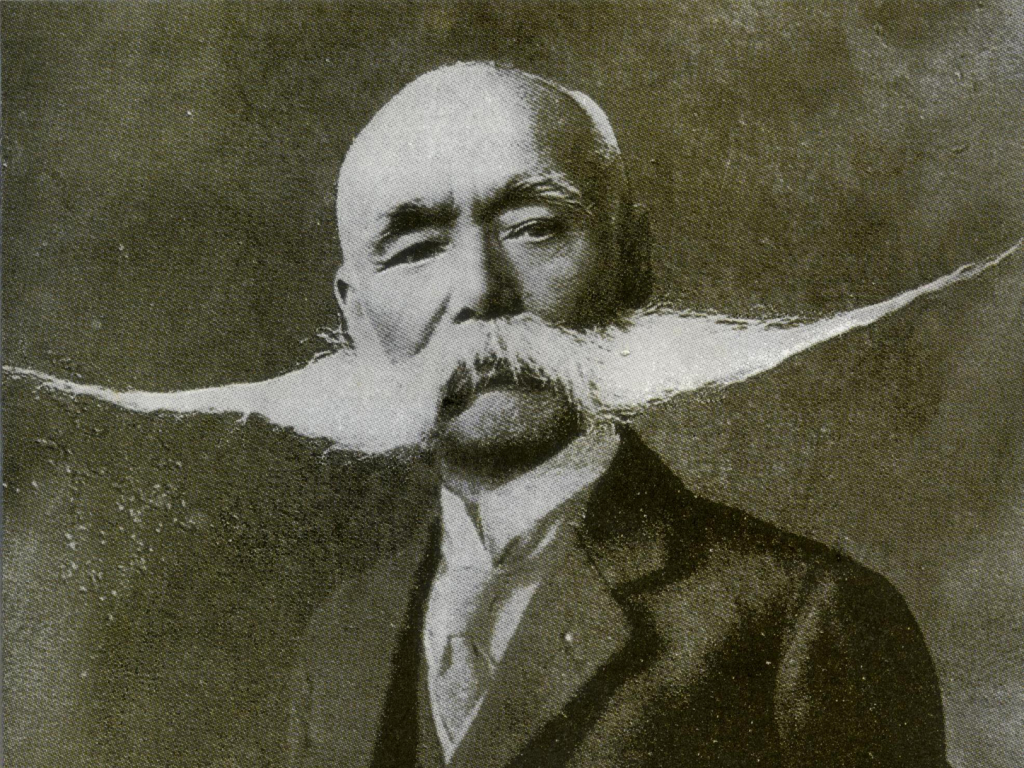Japan has had a long and complicated past when it comes to facial hair. While many Japanese companies today require employees to keep a clean-shaven face, beards and mustaches are making a comeback on the streets of Shibuya and other young, trendy neighborhoods of Tokyo.
It is unfortunate that Hakone’s famed Fujiya Hotel is currently closed for remodeling, because when it reopens sometime in 2020 guests can hopefully see photos of the mustache club founded by former hotel manager, and owner of a stunning set of whiskers, HSK Yamaguchi. Until then, here is a brief look at some of the most glorious mustaches in Japanese history.
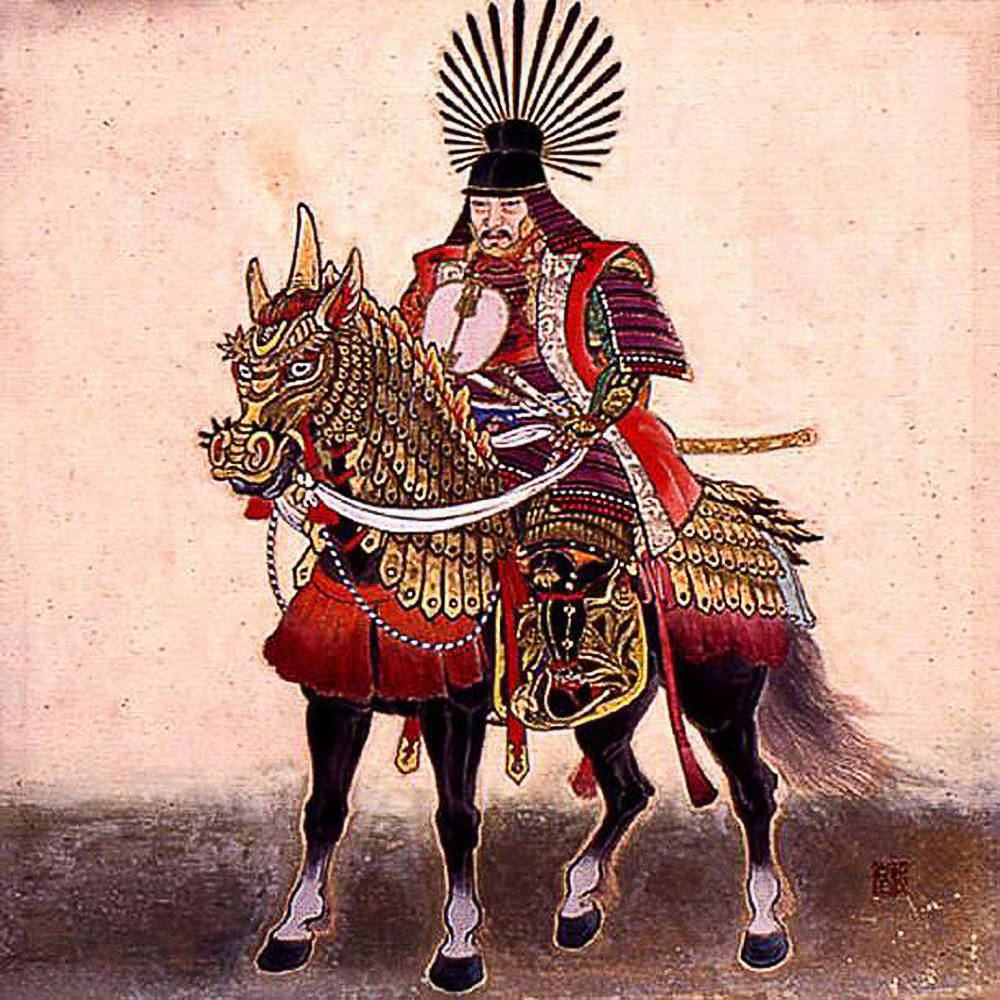
Image: Wikipedia Commons / Public Domain
Hideyoshi Toyotomi
To the early samurai, long and unruly facial hair – or the “horsehair beard” – was considered a sign of intimidation and those unable to grow these bushy symbols of manliness were shunned and ridiculed. As such, samurai warriors whose facial hair grew like the underbelly of a mangy rat, such as “Japan’s second unifier” Toyotomi Hideyoshi (1537–1598), adhered fake manes to their faces. During the Edo Era – Japan’s period of peace – facial hair was viewed as unbridled signs of aggression and 17th-century law prohibited even those with the most lush beards from displaying their grandeur (unless you had a facial scar).
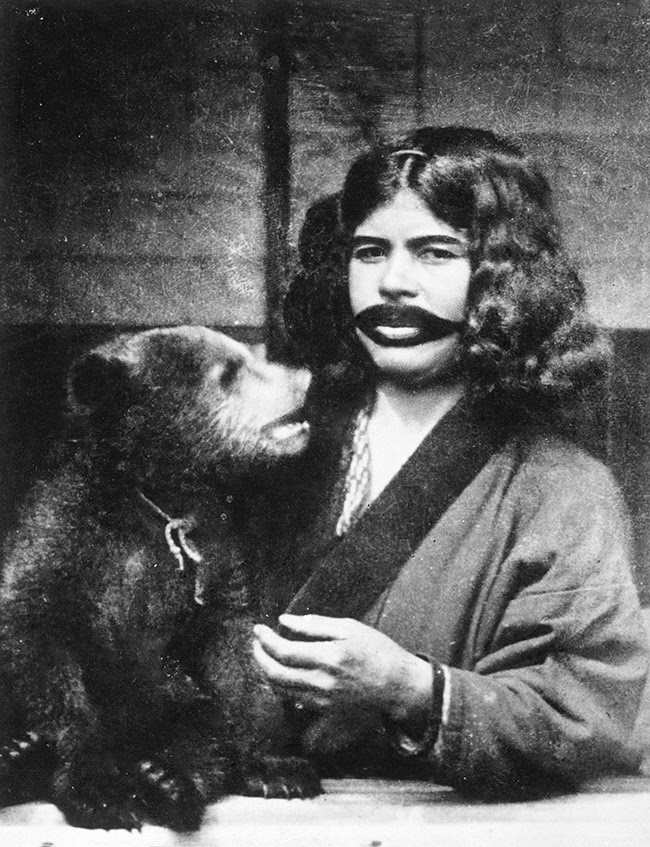
Image: “A bear’s foster mother” courtesy of Wikipedia Commons / Public Domain
Ainu Women’s Mouth Tattoos
The Edo shogunate took direct control over Hokkaido in the 19th century and considered the indigenous people of northern Japan – the Ainu – as savages, in part due to their ferocious facial hair. Tattooing, body painting and scarification is a tradition of the Ainu people going back thousands of years. Tattooing was considered a gift from the mythological ancestral mother of the Ainu, and tattooing is exclusive to Ainu females. The mustache-shaped tattoo around the lips holds symbolic purposes – from warding off evil spirits to indicating readiness for marriage to assuring a woman a place in the afterlife. The tattoo starts as early as the age of 6 or 7 as a spot on the upper lip and is then extended over the course of a lifetime. The Edo shogunate did their best to outlaw the Ainu tattoos, still the last Ainu woman sporting the mustache tattoo died in 1998.
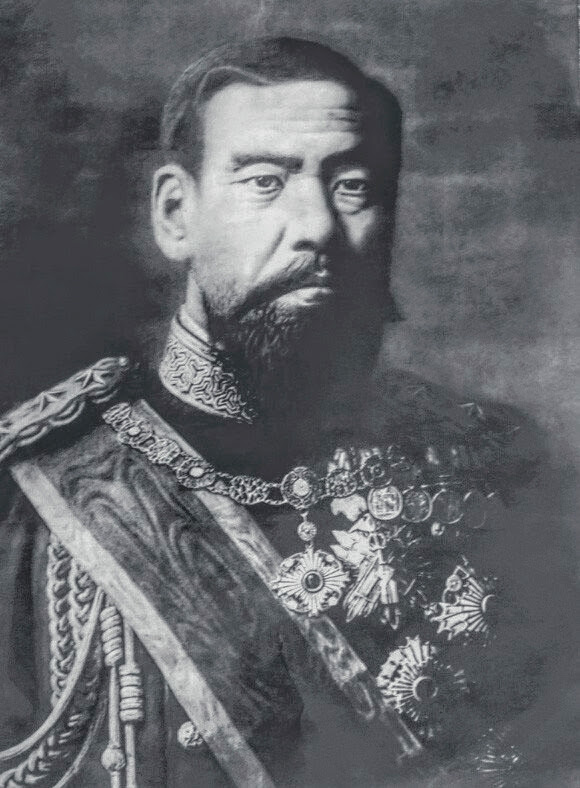
Image: Wikipedia Commons / Public Domain
Emperor Meiji
The Meiji Restoration of 1868 brought an end to the Edo Era and Japan’s period of isolation. Emperor Meiji (1852–1912) oversaw Japan’s rapid transformation from a feudal state to an industrialized power, and fully embraced Western customs. The red brick architecture of Tokyo Station, hamburger steak and Japanese whisky are just a few remnants from this era. Western fashion came in vogue as well, and Japanese men, led by Emperor Meiji’s example, put away the razor and proudly displayed lip caterpillars just like those worn by the dandies of London.
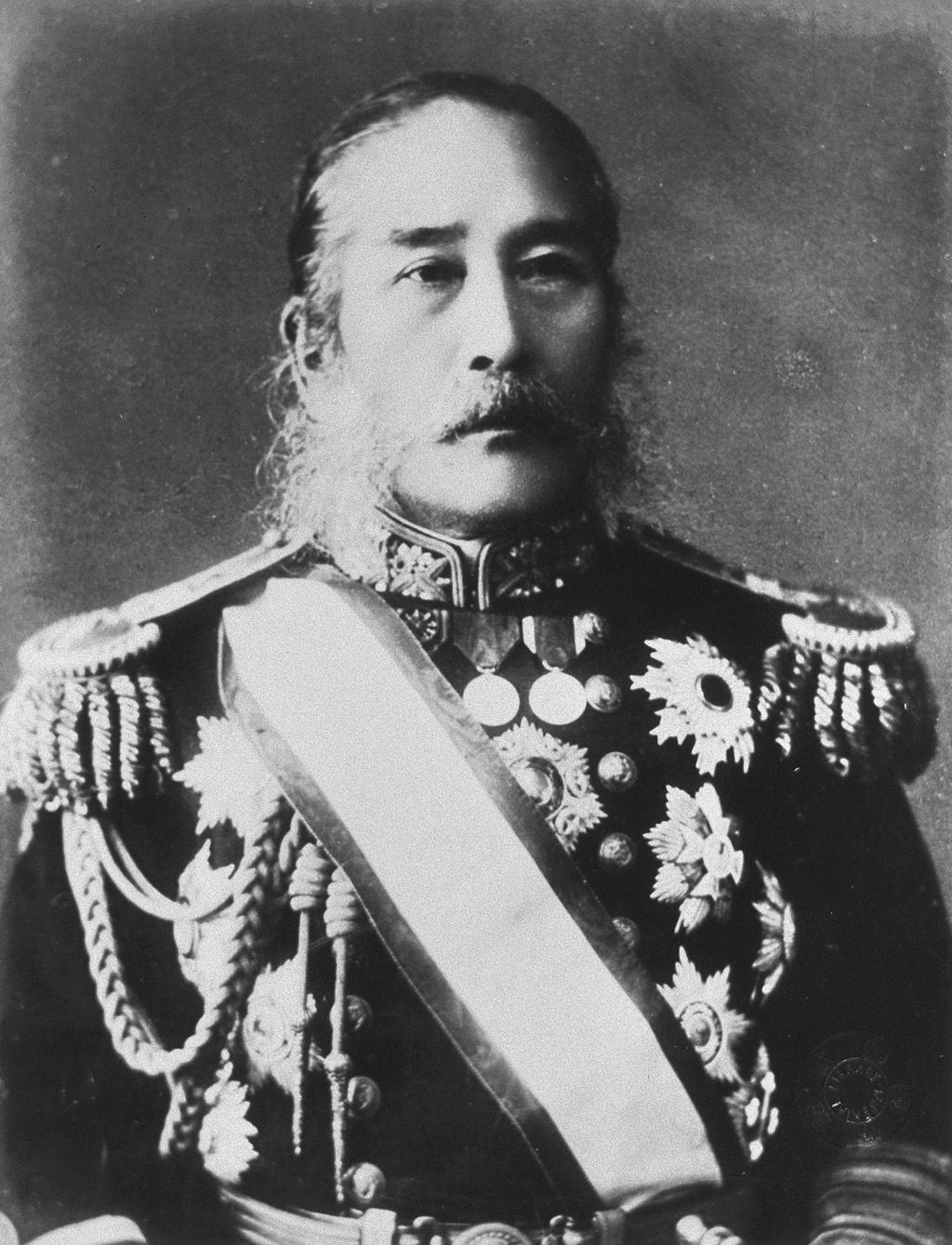
Image: Wikipedia Commons / Public Domain
Enomoto Takeaki
The founder of the Imperial Japanese Navy is the perfect face for the turbulent Meiji Era. In his early years, the babyfaced Enomoto Takeaki (1836–1908) was fierce loyalist to the Tokugawa Shogunate, fighting against the Meiji government all the way to the end of the Boshin War. However, the new government recognized Takeaki’s brilliance – and his burgeoning mustache – and pardoned him. The Tokyo native became a member of the ruling elite, attaining the rank of viscount. It can be no coincidence that his rapid rise in social status coincided with the healthy growth of his luscious ‘stache.
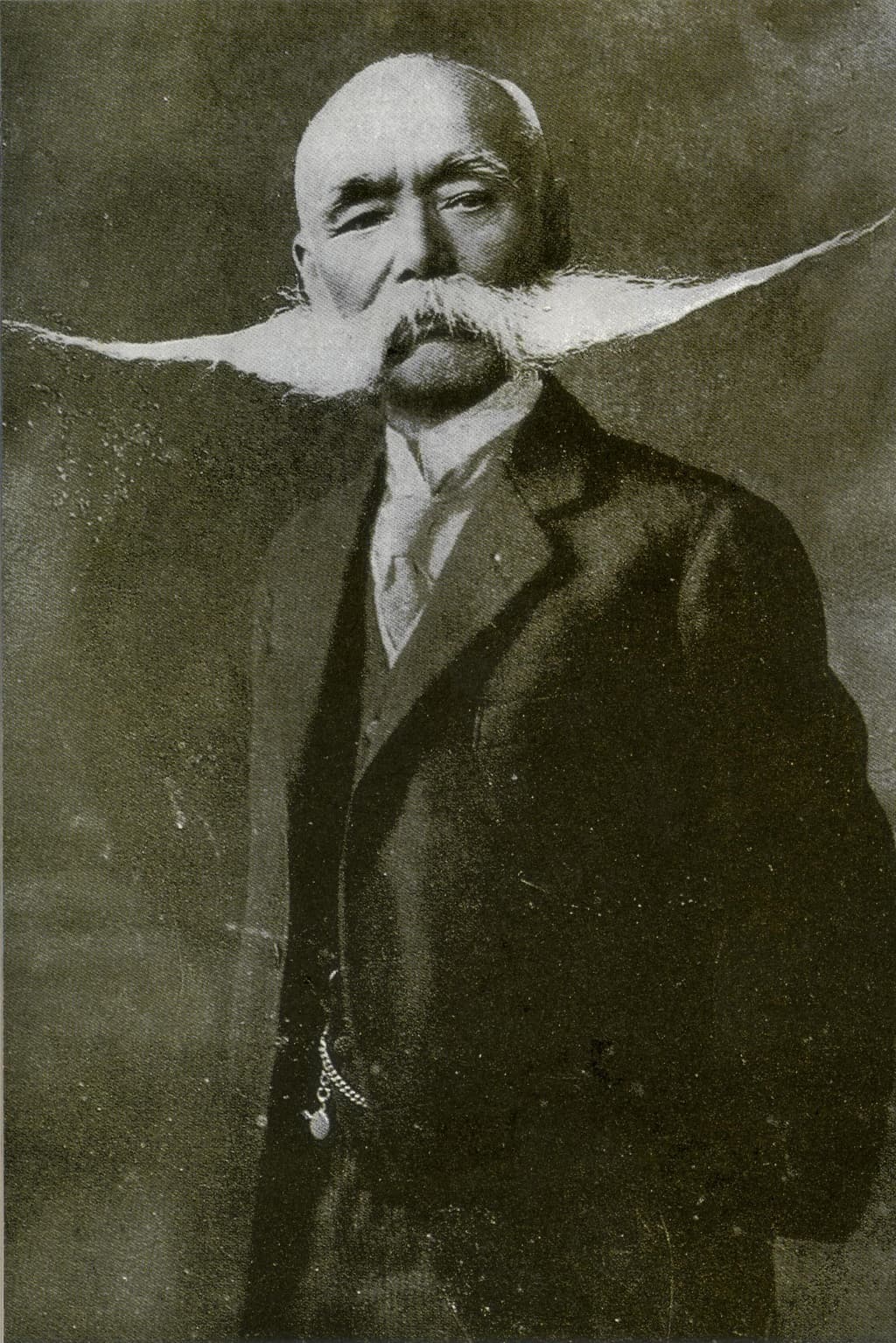
Image: Wikipedia Commons / Public Domain
Gaishi Nagaoka
No list can be complete without the inclusion of Count Gaishi Nagaoka (1858–1933). While the mustache trend in Japan waned at the turn of the 20th century, this air force commander and later member of Japan’s House of Representatives didn’t give up on the look, and became known for having the second longest mustache in the world, measuring 51 cm (20 inches) from tip to tip.
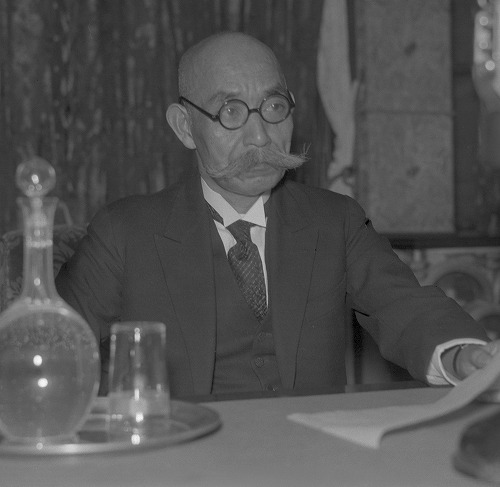
Image: Wikipedia Commons / Public Domain
Senjuru Hayashi
As nationalism and militaristic fervor grew throughout Japan in the 1930s, so did the fur above the lips of haughty politicians, notably prime minister Hideki Tojo. Imperial army commander Senjuro Hayahashi, who briefly served as prime minister in 1937, sported a marvelous handlebar mustache that must have been the envy of every suit at the Diet. Following World War II and the ensuing American occupation, the clean-shaven look of the US military and the introduction of the safety razor changed facial hair fashion in Japan drastically. Clean-shaven cheeks has been the respectable look for salarymen ever since.
Pikotaro
Did he start any fashion trends? Thankfully no. But during 2016 more than 200 million people watched the Japanese comedian’s face on his viral YouTube video for the song “PPAP” (Pen-Pineapple-Apple-Pen).” Pikotaro’s pencil mustache – first made famous by Errol Flynn and then made creepy by John Waters – didn’t catch on with the masses, but shows that the mustache is not lost to the ages and whether it’s a chevron, horseshoe, walrus or Fu Manchu, the cookie duster is due for a much-needed comeback in Japan.

